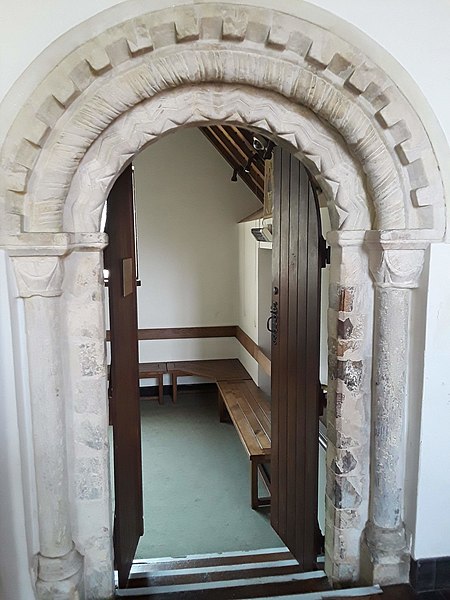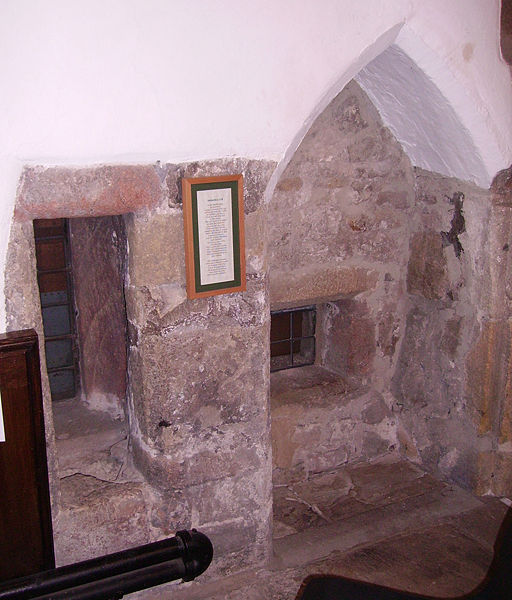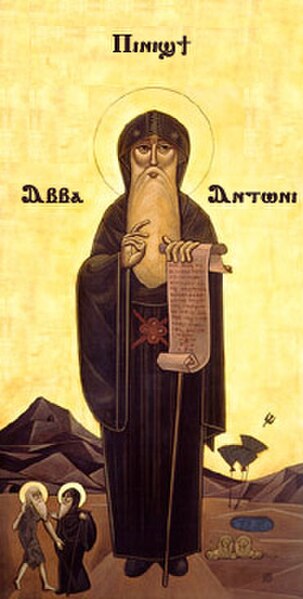Julian of Norwich, also known as Juliana of Norwich, the Lady Julian, Dame Julian or Mother Julian, was an English anchoress of the Middle Ages. Her writings, now known as Revelations of Divine Love, are the earliest surviving English language works by a woman, although it is possible that some anonymous works may have had female authors. They are also the only surviving English language works by an anchoress.
David Holgate's statue of Julian, outside Norwich Cathedral, completed in 2000
A bishop blessing an anchoress, from MS 079: Pontifical (c. 1400 – c. 1410), Corpus Christi College, Cambridge
First edition of XVI Revelations of Divine Love (1670)
The entrance to the modern cell
In Christianity, an anchorite or anchoret is someone who, for religious reasons, withdraws from secular society to be able to lead an intensely prayer-orientated, ascetic, or Eucharist-focused life. Anchorites are frequently considered to be a type of hermit, but unlike hermits, they were required to take a vow of stability of place, opting for permanent enclosure in cells often attached to churches. Also unlike hermits, anchorites were subject to a religious rite of consecration that closely resembled the funeral rite, following which they would be considered dead to the world and a type of living saint. Anchorites had a certain autonomy, as they did not answer to any ecclesiastical authority apart from bishops.
Anchorite's cell in Holy Trinity Church, Skipton
Christina Carpenter was walled in to a cell in St James's Church in Shere, Surrey.
The Anchorite (1881), by Teodor Axentowicz
Anthony the Great, father of Christian Monasticism and early anchorite. The Coptic inscription reads ' Ⲡⲓⲛⲓϣϯ Ⲁⲃⲃⲁ Ⲁⲛⲧⲱⲛⲓ' or 'The Great Father Anthony'.








